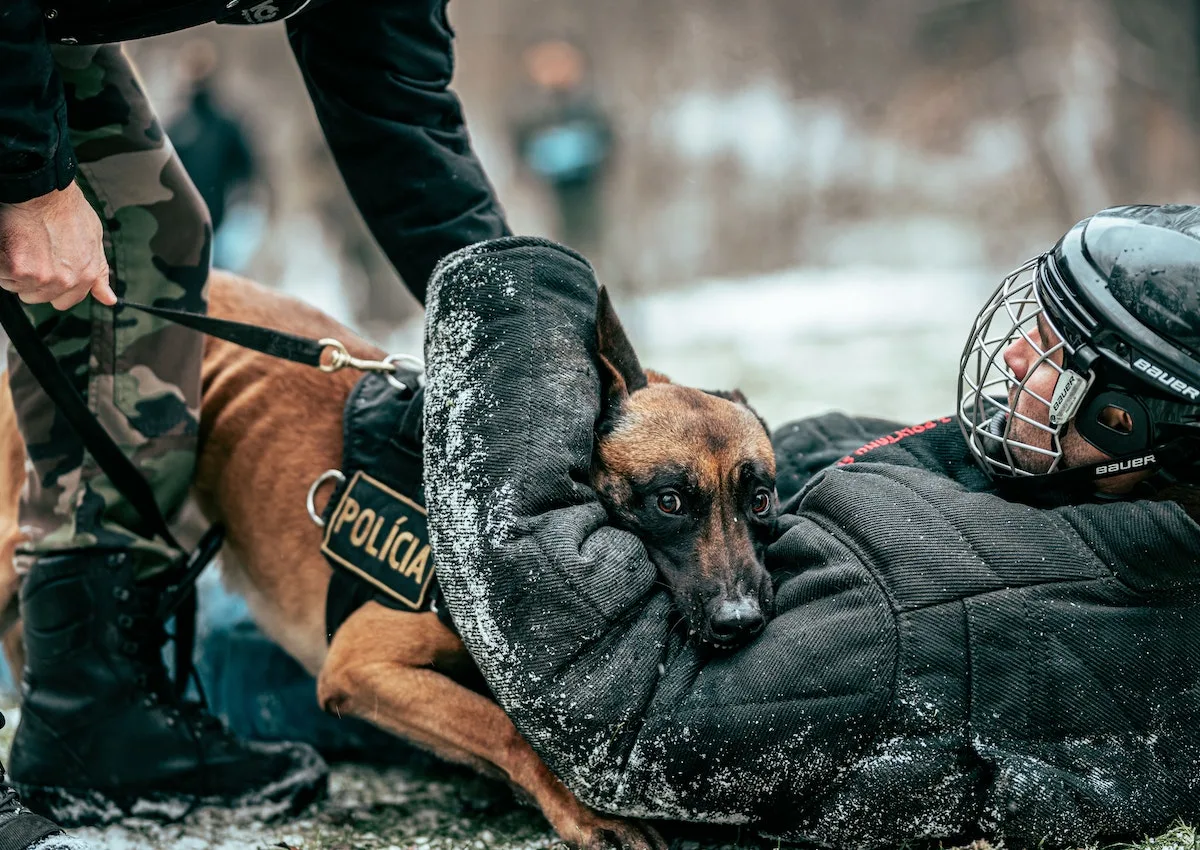The Belgian Malinois is renowned for its intelligence, agility and loyalty, making it a popular choice for police and military work. One common topic of discussion is their bite force, often surrounded by myths and misconceptions.
It is reported by the American Veterinary Medical Association that over 4.5 million Americans are the victims of dog bites yearly. We’ll cover the truth behind the bite force of the Belgian Malinois, separating fact from fiction and exploring what truly makes them exceptional working dogs.

Understanding bite force
Let’s first understand what creates the bite force of a Malinois. Bite force is generated by the craniomandibular structures which include the jaw adductor muscles, temporomandibular joints (TMJs) and the teeth.
In other words, it’s the combination of the components of the jaw that generate bite force. There are many factors that can influence bite force such as the size of the dog’s body, skull and the shape of their jaw.
As you can imagine, the larger the body and skull, the greater capability of force. However, this is not always the case as sometimes things such as dental injuries or disease can significantly impact the bite force of a dog.
It’s also important to understand that grip or location of the bite in relation to the dog’s teeth can also impact bite force. An article published by Stanley Coran in Psychology Today points this out and illuminates why position technique is a crucial part of dog bite training.
The jaw is essentially a hinge similar to a pair of pliers. The closer you are to the back hinge point (rear molars), the more pressure or bite force is capable of being generated.
How is bite force measured
There are two units to measure bite force. The first, which most people are familiar with, is PSI or pounds per square inch. The second is Newtons. One Newton per square centimeter is equal to approximately 1.45 PSI.
In a 2018 article published by Frontiers In Veterinary Science two methods were used to measure bite strength. The first tested live dogs (in vivo), which were anesthetized and had their jaw muscles electrically stimulated. The second method was more theoretical (in silica) and based on computations made using the architecture of the skulls and jaws of deceased dogs.
However, further searching revealed a new study which utilized a bite sleeve fitted with sensors to measure an actual live bite of a Belgian Malinois.

What is the bite force of a Belgian Malinois?
The average bite force of a Belgian Malinois is 358 PSI according to a study published in the National Library of Medicine. The study utilized a bite sleeve fitted with sensors and tested 12 Belgian Malinois dogs and found the average bite force to be 246.8 N/cm2 (Newton per square centimeter).
Converting this to PSI (pounds to square inch) resulted in a whopping 358 PSI. To put that in perspective a human has an average bite force of about 120 PSI.
With a capacity like that, it’s no wonder why they make an excellent choice for drug sniffing breeds, criminal interdiction, protection dogs and police dogs in general.

